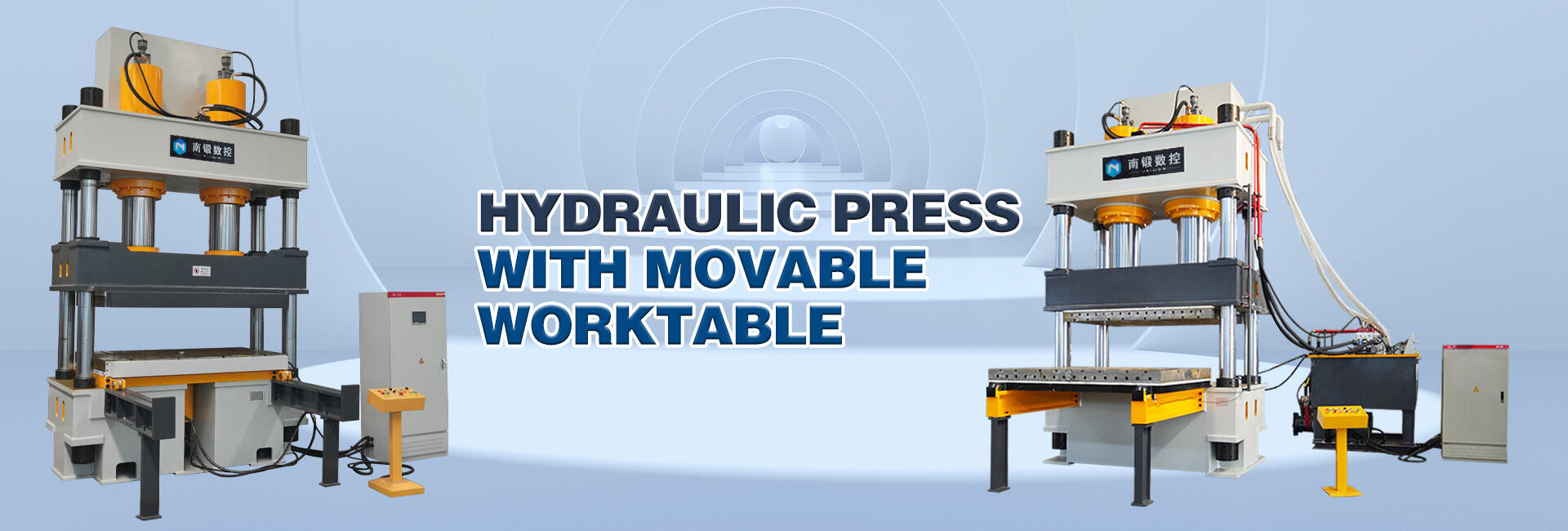What are the common troubleshooting steps if a 200-ton C-frame hydraulic press experiences a drop in pressure?
Troubleshooting Pressure Drops in a 200-Ton C-Frame Hydraulic Press
Hydraulic presses, such as the 200-ton C-frame models produced by Nadun Machinery Manufacture Co., Ltd., are essential in various industrial applications due to their reliability and efficiency. However, like any machinery, they can experience issues that require troubleshooting. A common problem is a drop in pressure, which can significantly affect the press's performance. Here are some key steps to diagnose and resolve pressure drops in a 200-ton C-frame hydraulic press.
1. Check the Hydraulic Fluid
One of the first steps is to inspect the hydraulic fluid. Ensure that the fluid levels are adequate and that the fluid is not contaminated. Low fluid levels or contaminated fluid can cause pressure drops. If the fluid is dirty, it should be replaced with the type recommended by the manufacturer.
2. Inspect for Leaks
Hydraulic leaks are a common cause of pressure drops. Inspect all hoses, fittings, seals, and connections for signs of leaks. Look for oil spots under the machine or any visible drips. Tighten any loose connections and replace any damaged components.
3. Examine the Hydraulic Pump
The hydraulic pump is crucial for maintaining pressure. Check the pump for any signs of wear or damage. Listen for unusual noises, which can indicate internal damage or inefficiency. Ensure that the pump is operating at the correct RPM as specified in the manual.
4. Check the Relief Valve
A malfunctioning relief valve can lead to pressure drops. Inspect the relief valve for proper setting and operation. If the valve is stuck open or incorrectly set, it will need to be adjusted or replaced.
5. Assess the Pressure Gauge
A faulty pressure gauge can give inaccurate readings, leading to misdiagnosis. Verify the accuracy of the pressure gauge by comparing it with a known good gauge. Replace the gauge if it is found to be defective.
6. Inspect Cylinders and Seals
The hydraulic cylinders and seals are critical for maintaining pressure. Check the cylinders for any signs of wear, damage, or leaks. Inspect the seals around the cylinders for any wear or damage and replace them if necessary.
7. Evaluate the Hydraulic Lines
Blocked or kinked hydraulic lines can restrict the flow of fluid, leading to pressure drops. Inspect all lines for any blockages or kinks. Clear any obstructions and ensure that the lines are correctly routed and secured.
8. Check for Air in the System
Air in the hydraulic system can cause pressure fluctuations. Bleed the system to remove any trapped air. Ensure that all air is expelled and that the system is properly sealed to prevent air from entering.
9. Review Operating Conditions
Sometimes, the issue can be related to the operating conditions. Ensure that the press is operating within the specified parameters and that the work environment is suitable for the hydraulic system.
By systematically following these troubleshooting steps, operators can identify and resolve pressure drops in their 200-ton C-frame hydraulic presses, ensuring optimal performance and longevity of the equipment. At Nadun Machinery Manufacture Co., Ltd., we are committed to providing high-quality machinery and comprehensive support to our customers. For further assistance or to learn more about our products, please visit our website or contact us directly.
Nadun Machinery Manufacture Co., Ltd.
- Address: NO.219, Xingye Road, Tengzhou, Zaozhuang, Shandong Province, China
- Contact Person: Caroline Ming
- Tel: +86 13606325020
- Fax: +86 0632 5268766
- Email: [email protected]
By adhering to these guidelines, operators can ensure the smooth operation of their hydraulic presses and maintain productivity in their industrial processes.

 EN
EN
 AR
AR HR
HR CS
CS DA
DA NL
NL FI
FI FR
FR DE
DE EL
EL IT
IT JA
JA KO
KO NO
NO PL
PL PT
PT RO
RO RU
RU ES
ES SV
SV IW
IW ID
ID LV
LV LT
LT SR
SR SK
SK SL
SL UK
UK SQ
SQ ET
ET HU
HU TH
TH TR
TR FA
FA AF
AF MS
MS MK
MK KA
KA UR
UR BN
BN

